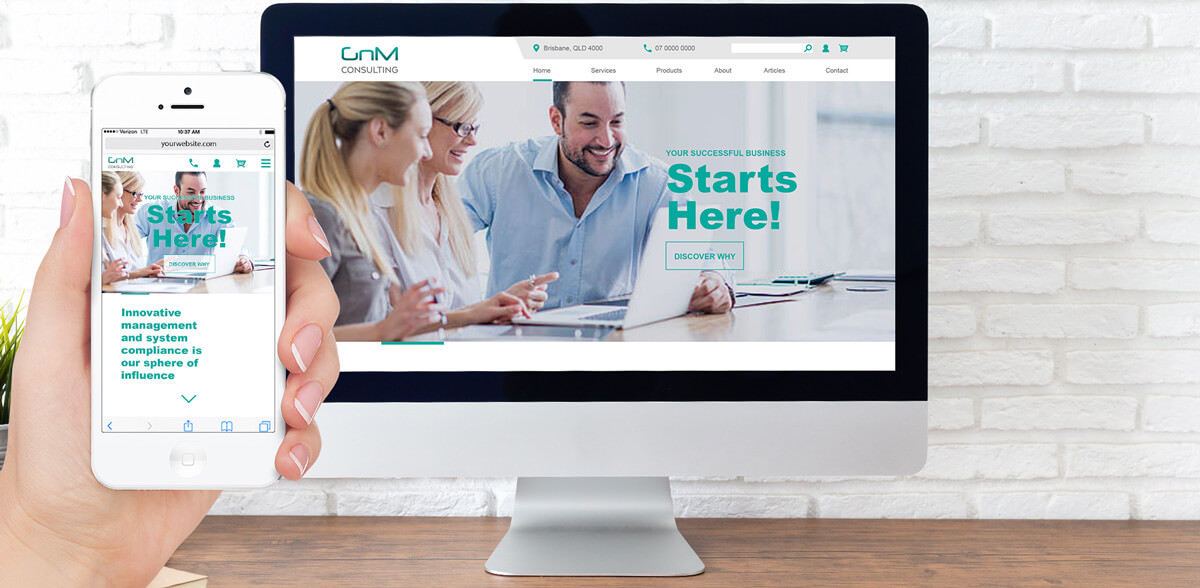Learning from COVID-19.
Guest author, Craig Johnson, explains how to move forward after the pandemic
COVID-19 has been a shock to the system. Every system.
But in so thoroughly disrupting life and business the pandemic has introduced, alongside, of course, much sorrow and loss, an exceptional opportunity to reflect… and improve. To change for the better.
After all, the word crisis originates from the Greek krino, meaning to ‘separate’ or ‘judge’; and so, in the krisis (‘decisive moment’), decide what is worthwhile to keep – and what needs to change.
This is the time, therefore, to grasp the opportunity to do things you think you could not do before.
“You never let a serious crisis go to waste. And what I mean by that it’s an opportunity to do things you think you could not do before”
Rahm Emanuel
Agility and resilience have never been more important
Creating an organisation able to respond and adapt to events, whether positive or negative, is the key to future success.
The spotlight will be on IT as never before, and not only because the world has grown used to operating and interacting remotely.
Organisations that have successfully embraced and leveraged digital technologies, that stuck to a long-term framework towards digital maturity and ongoing process improvement, have inevitably fared better through this crisis. They have a built-in flexibility and resilience throughout the organisation that enables them to change at pace.
The additional spend within IT has been justified, and the whole enterprise has felt the benefit.
Conversely, there are the organisations where IT has been seen as a necessary overhead rather than a key enabler. Here, services have proven not fit for purpose and their processes have let them down.
Some organisations had invested in tools, but were unable to use them to their full capability; they had invested in the technology but, critically, not the underpinning framework to measure next steps and success. Tools were developed simply to facilitate IT, not to maximise the customer and employee experience.
The lesson learned is that the more digitisation in place, the better and more rapidly you can react and take the initiative in the changing market landscape.
Now is the time to reflect, assess, and invest. However, the key is knowing where to invest. And when.
Learning from the COVID-19 experience
COVID-19 presented a unique set of circumstances, and organisations have found themselves in one of three categories – those able to stay on course, those that ran aground, and those whose operations were compromised but nevertheless remained intact.
Light impact
These organisations were able to stress-test their processes and technology throughout the COVID period and saw little or no impact on productivity. Staff had the right tools and knowledge to carry out their roles, no matter the environment.
Having made the right investments, these companies had built-in resilience and flexibility and felt vindicated about the level of spend on IT. The journey on their Digital Maturity roadmap is in full flight and they are reaping the rewards.
Heavily impacted
These organisations found themselves too reliant on key individuals in siloed areas; IT didn’t serve the whole enterprise and many areas were left fending for themselves, trying to find tools with which they could make do and get themselves through the crisis.
Thought leadership and innovation were not part of company culture, and ultimately these organisations were found wanting. Senior IT leaders in these organisations will be doing a lot of deliberation, trying to work out where things went wrong and what to do now.
Manageable impact
These organisations had a strategy, they had a plan and were on the journey, but COVID came too soon. Nevertheless they can be confident that they are on the right path and see their investments to date have paid off. The lessons learned can help them shape future responses.
The takeaway…
The organisations making the most of the digital revolution will thrive. They will have the edge over competitors, increase customer and staff satisfaction, and build a solid base to future-proof the enterprise.
These organisations will be able to adapt and respond more quickly and effectively to challenges, and continue to meet customer expectations. The question is – how to get there?
A clear road map towards success
A serious mistake that can often be observed within organisations is the failure to put in place a framework within which they measure where they are, articulate a clear vision of where they want to go, and set out what they need to achieve to get there.
Many organisations invest heavily in tooling but fail to reap much tangible benefit because there is an inherent expectation (often driven by the vendor) that the tool will magically transform the organisation into a superfluid, hyper-automated company of the future.
This vision rarely materialises in an environment where short termism and re-activeness dominate.
Where organisations can succeed is by ensuring a clear medium to long-term vision, understanding that tools are an enabler for velocity, intelligence and experience, and that real progress towards that vision has to be measured to ensure quality of outcomes.
There are multiple phases to any digital maturity journey. Building out a plan to transition through these phases is not that much different from what you would do if you were to start a new fitness regime: you baseline, create a target, and then continually measure at specified time intervals to ensure you are meeting that target.
Whilst building out a plan for digital maturity is obviously more complex, the fundamental pieces are the same. The following is advised:
- Baseline each process and measure the level of automation, user experience, reactive or predictive business intelligence, and inefficiencies
- Output a digital maturity score for each process to provide an overall average for that department
- Create heat maps based on those scores; this allows pieces of work to be defined to ensure relevance and the order in which they need to be performed
- Define metrics to measure what it is that is being improved, to track progress and show ROI. For example, the cost of IT Ops as a percentage of revenue
Just as wearing a fitness watch encourages people to take more steps, use of a digital maturity framework based on these principles can significantly improve the chances of success.
A proper framework also allows measurement of the whole enterprise against a digital maturity score, so that the organisational decision-making process can be based on quantifiable and consistent metrics – ensuring effort and investment go where they are most needed.
Why process matters
In every sphere, from Finance and Production to Customer Service and IT, the more fluid your operations, the better the experience – both for your employees and for your customers.
In short, when your processes run better, your business runs better.
But it’s important to recognise that processes are not static. Even the best plans have exceptions, and over time these exceptions can become the rule. Dynamic markets also force change: customer expectations, new product lines, acquisitions, changing geographies, outsourcing, different suppliers, competitor moves, rules and regulations, and so on.
Over time, due to the ever-changing dynamics within and outside organisations, friction creeps in: departmental silos, manual workarounds, and disparate systems cause costs to rise and experiences to suffer.
Many organisations operate with processes that are not fit for purpose: they have grown organically over time, in response to events, but have never been assessed for productivity and effectiveness.
During the COVID-19 period, processes will have been stress-tested. This data provides an excellent opportunity for in-depth review.
Typically process reviews involve an interview with stakeholders and consideration of the process documentation. However, the documentation rarely reflects the actual processes being practised within the organisation.
Furthermore, think about all the processes, process steps, and people involved in completing a task. Not only are there infinite possibilities for variables, but different departments are responsible for different stages along the way. It’s rare for one person or team to have oversight of all steps involved. So if one area is under performing, it not only impacts all the others, but it might not be immediately obvious where or how.
More often than not, in other words, standard business process analysis will tell you what people ought to be doing, or what people think they are doing, but not what they actually are doing.
Gaining clear insight into what’s happening
Technologies such as process mining allow companies to visualise the real-time data running through their processes across multiple technology stacks. Businesses can clearly identify how many variations of their process are taking place, the associated wasted effort and cost, and the opportunities for useful automation.
Process mining applies algorithms to your data, and this is what distinguishes it from other process-discovery methods.
An algorithm is a set of rules to be followed in calculations or other problem-solving operations. By using algorithms, process mining can show you, based on your own data and fact-based rules, exactly how your process flows through your organisation.
Once you see your process flows, you can answer those questions that are key to any investigation: who, what, when, where, why and how. And because process mining uses the event logs from your systems, that data is already available.
Using AI and machine learning technologies to analyse your process data, process mining quickly uncovers the root causes of undesirable actions – and identifies where things are working well. For example:
- Are employees sufficiently trained in a process area?
- Do they spend valuable time circumventing obsolete internal restrictions or accommodating unreliable suppliers?
- Why is one location more productive than another, and can it be used as the new standard?
- Which vendor gives you the best chance of meeting a committed delivery date?
- Which employees are not following the process?
- Which of your channel partners are downselling rather than upselling?
Process Analytics turns the transparency of Process Discovery into truths about where you have the best opportunities for improvement.
But process mining doesn’t simply pull data together into an organised sequence; it creates a rich dynamic visual representation of that sequence. For anyone unfamiliar with process mining technology, it inspires a true moment of clarity – an unparalleled look into the functioning of your process.
How automation can underpin process efficiency
Many of the things we take for granted in our daily lives are made possible by organisations dedicated to facilitating convenience, ease, safety, and comfort. Take a closer look, and think about those organisations. When they’re performing efficiently internally, they have the opportunity to perform efficiently externally, providing their goods and services more rapidly, with more accuracy, and reaching more people.
Performing efficiently means being able to navigate and respond to changing market conditions; supporting an infrastructure that befits a growing and thriving organisation; giving employees the tools they need to be productive; and ensuring that customer experiences are seamless and flawless.
It’s why businesses today are increasingly turning to technology, and specifically automation software.
The advent of the Digital Workforce
When business processes have been analysed and an optimal path identified, organisations can begin creating a ‘Digital Workforce’ that can augment its human workforce. This will be critical for future success in improving staff satisfaction and customer experience, as well as ensuring lower costs and greater efficiency.
This Digital Workforce can not only provide invaluable day-to-day support, but also act as an elastic resource pool ready for organisations to draw on when required. This provides the ability to quickly scale up process throughput during the type of events we have seen over the last few months, freeing up the human workforce to focus on problem-solving.
Process automation used to be an opportunity available only to those with the necessary ‘technical know-how,’ such as IT professionals and software engineers. Essentially, only someone able to write code and create scripts could automate a task.
However, with the introduction of automation software that records tasks as they’re performed, by capturing what you type and click, and auto-generates a script based on those actions, the automation floodgates are open.
Business users can now automate tasks themselves by creating their own ‘Digital Assistants’ — with no need for a tech degree. The benefit here? Everyone is able to focus their energy on tasks that add the most value to their business, whilst also significantly increasing productivity. Including the IT crew who, previously, had to allocate time to manually create such automation’s.
Cognitive automation
Furthermore, with the advent and significant growth in machine learning and AI disciplines, Cognitive Automation is now becoming widespread. This enables software robots to analyse and make decisions, rather than just perform repetitive tasks. So organisations can now automate human-centric processes 24x7x365, dramatically reducing operational costs and improving the customer experience.
There are many examples in key industries and departments where automation has been widely and effectively applied. To name just a few:
- Banking and Financial: Data validations, data migration between banking applications, customer account management, report creation, comparing mortgage values between cities, form filling, financial claims processing, updating loan data and backing up receipts, invoice processing, automating AP/AR actions, auditing
- Government: Populating subcontractor forms, verification processes, integrate legacy systems, automation of management information reporting
- Healthcare: Patient data migration and processing, reporting for doctors, medical bill processing, insurance data automation and claim processing, triggering emails from medical billing systems, claim status and eligibility automation, and patient record storage
- Manufacturing: ERP automation, automation of logistics data, data monitoring, product pricing comparisons, inventory management, Excel automation
And in business departments:
- HR: Automating tasks in PeopleSoft, email notifications, populating/ aggregating employee information
- Operations/IT: Creating accounts, software installations, batch processing, printer set-ups, system integrations
- Sales: Creating and printing invoices, populating customer information into CRMs
- Marketing: Creating lead gen reports, social sentiment monitoring
In essence, how to automate is no longer the central issue.
The critical question now is where to automate. Where can automation offer the greatest benefit, and where is it required most urgently, in your specific organisation?
So, what should you do?
Now is not the time not to rush into decisions.
Now is the time to assess what went well, what didn’t, and what could be done better. And, most importantly, to figure out the optimum strategy to build the organisational flexibility and resilience needed to thrive in any situation.
And so… what should you do?
First, we would recommend a thorough assessment that will allow you to see where you are on your journey to digital maturity, and begin to map out the crucial next steps.
You may prefer to run this review internally, or with an independent external consultancy. But time spent planning will save on many costly investments aimed at the wrong areas. Increasing your digital score is critical, and should be used as the determining factor in decision-making.
Contact DIGITAL CLARITY or PURO DESIGN to for a free consultation.
Article by Digital Clarity



